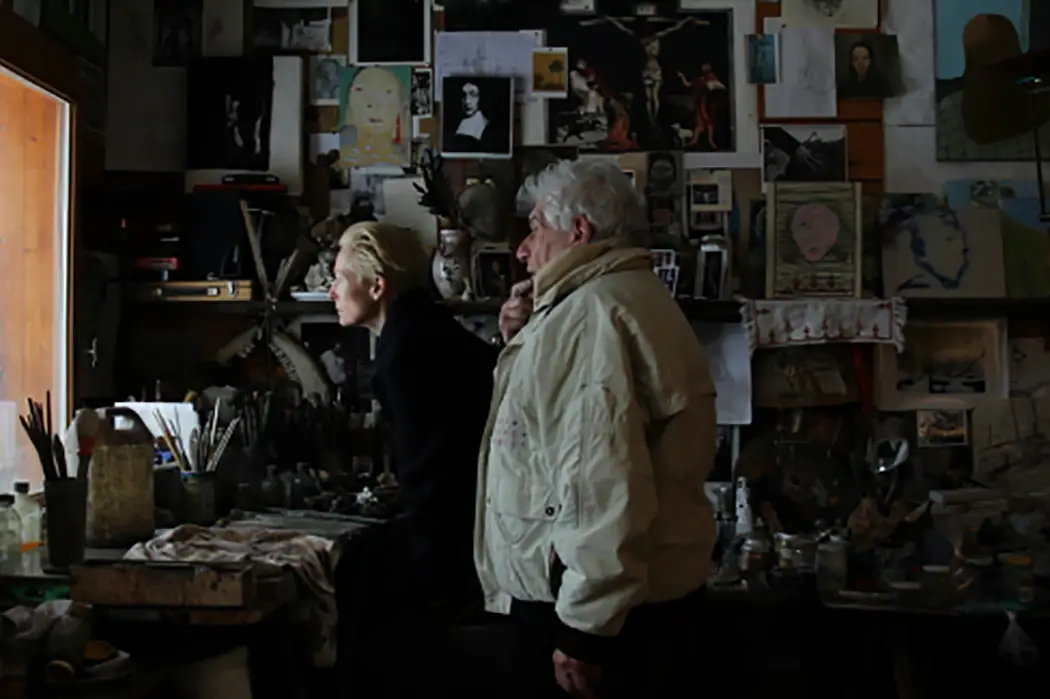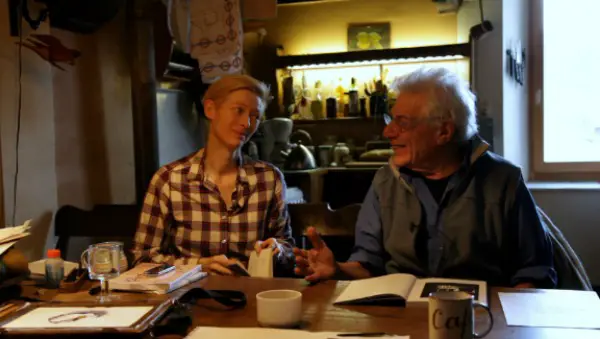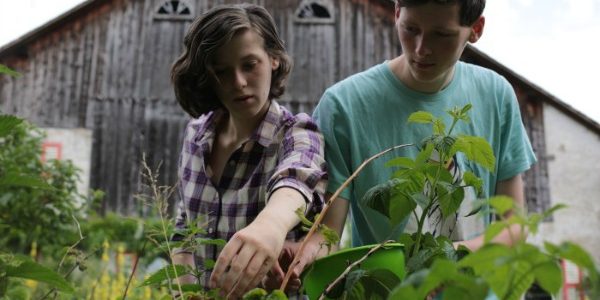THE SEASONS IN QUINCY: A Fitting Coda For An Extraordinary Man

Tomas is a chronic cineaste who studied English literature in…
When John Berger died on January 2nd, the world lost one of its foremost intellectuals. He was a philosopher of Marxist humanism; he was a piercing art critic; he was a Booker Prize-winning writer of exquisite poetry and prose; he was a painter; and, as The Seasons in Quincy: Four Portraits of John Berger shows, he was a man at one with family and nature who never lost a syllable of wisdom in old age.
According to director/producer Colin MacCabe, this film (or, to be more precise, the four short films that make up its whole) was not intended to be a record of Berger’s final seasons in the quiet village commune of Quincy in Haute-Savoie, France, but it is – and to my mind, it is a fitting coda for a man whose work has been a profound influence to so many.
Of Apples and Animals
As I mentioned, The Seasons in Quincy is not an extended documentary, but rather a compilation of four short essay films that each laser in on specific elements of Berger’s output whilst also chronicling a different season in his life in Quincy. The first, “Ways of Listening,” sees long-time friend and collaborator Tilda Swinton visiting Berger during the winter of 2010 and leading a discussion on their special kinship, particularly as children of fathers who had served in the World Wars. As Swinton cuts and peels apples for a dessert crumble in the way Berger’s father used to do, the two reminisce on these memories and contemplate the importance of lending voice to past experience.
Swinton’s presence here is as welcome as it is in any film she stars in, and what makes this part work so well for me is the gentle ease in which it moves, allowing us a taste of both Berger’s humble tranquility and his deep-seated connection with the actress. There’s a moment, for instance, in which he shows her one of his poems, and she reacts as though she’s found the Holy Grail. To call the moment moving would be an understatement, and my heart instantly went out to her; as it was clear to me she would have taken his loss particularly hard.

The second film, entitled “Spring,” was filmed shortly after the death of Berger’s wife, Beverly, in 2013. Directed by Christopher Roth, this essay is the only one not to feature Berger except in voice-over, and it deals with his contributions to critical animal studies, meditating on how both humans and animals are tied to the shared experience of mortality. It’s presented by a group of college students and edited in a way that reminded me of Jean-Luc Godard’s aesthetic, and as such feels rather incongruous with the other films in the set. It would be a decent primer for grad students looking for a quick introduction to Berger’s work on animals, but in the film it is perhaps too theoretical when everything around it is mostly experiential.
Stories We Tell (and the Fruits We Eat)
Next we have “A Song for Politics,” the most polemical segment of The Seasons in Quincy, and also the most curious. Here, Berger participates in a roundtable discussion with fellow left-wing thinkers Ben Lerner and Akshi Singh, as well as directors Colin MacCabe and Christopher Roth, and their conversation centers around the state of the present in relation to the past, the way the past is accessed through acts of storytelling, and how right-wing rhetoric is deliberately couched in nostalgic terms (which, as we have seen in the ascendancy of Donald Trump, is a very fair point).
Interspersed throughout the discussion is footage of agricultural laborers working against a soundtrack of famous revolutionary songs, and the whole film ends up feeling very much like a tribute to Berger’s Marxist views. These are views he held his entire life, and views that never lost their power of insight.
For me, the documentary’s funniest moment occurs in this segment, when Berger figuratively drops the mic with an observation about the need for solidarity in Hell as opposed to Heaven. It leaves everyone in the room speechless, and I don’t think there’s another moment that shows just how easily and succinctly he could cut into the heart of any matter, politics or otherwise.

My favorite of The Seasons in Quincy, however, is “Harvest,” the documentary’s conclusion, in which Tilda Swinton returns and takes the directorial helm. Though it arguably has the least to do with Berger (instead focusing on Swinton’s children, Xavier and Honor, who visit and explore Quincy while he stays in Paris), it is actually an apropos bookend, for it is in some ways a passing of the torch to the next generation.
This segment begins when the Swintons bring Berger eggs from their Scottish home, and so in return he gives them permission to pick the raspberries from his garden – raspberries that had been tended by his late wife – and to eat them in the spot where they saw her. It’s a tribute to Beverly in one way, and also a ritualistic accession of these young people to the ways of nature and self-actualization that Berger had attained decades before. It is also in Quincy that the Swinton kids meet Berger’s artistic son, Yves, who gives them a tour of the grounds and a taste of his own creative ventures.
Charmingly simple in every way, “Harvest” is nevertheless a distillation of Berger’s humanity into the blooming buds of youth, and a testament to the fact that his legacy will endure now that he is no longer with us. It is fitting, then, that the last shot of this documentary is Berger zooming away on a motorbike in order to give the Swintons riding lessons. Tilda smiles helplessly in the camera, yet it’s evident that she trusts – and reveres – this man with all her life. If only we should have been so lucky to have known him as well as she did.
A New Way of Knowing
Many who see The Seasons in Quincy will be dissatisfied by its structure, and others will complain that the film only gives us a taste of the man he was. I think differently. The format is unconventional, but it reflects Berger’s wide-ranging interests in such a way that eschews reductionism. Each essay paints an individual portrait that adds up to something more, much like how an artist’s legacy is built on the work he or she leaves behind. And if these essays do not say much, then we still have Berger’s writing, his artwork, his TV appearances, and countless other miscellanea to bridge these gaps.
The Seasons in Quincy is an autumnal work, meant to impart a new way of knowing a man who himself knew so much about art and the world. It is hagiographic in nature, yes, but only because Berger was deserving of it. I don’t know how you can watch his genial face and hear his warm, mellifluous voice and think otherwise.
What is your favorite work by John Berger?
The Seasons in Quincy: Four Portraits is now available on DVD & VOD.
Does content like this matter to you?
Become a Member and support film journalism. Unlock access to all of Film Inquiry`s great articles. Join a community of like-minded readers who are passionate about cinema - get access to our private members Network, give back to independent filmmakers, and more.
Tomas is a chronic cineaste who studied English literature in university (in both the undergraduate and graduate levels), and hopes to pursue a career in writing. His passion for film began in earnest at the beginning of the 2010s, and since then he's been reveling at the vast horizons of the cinematic landscape like a kid at the proverbial candy store.













